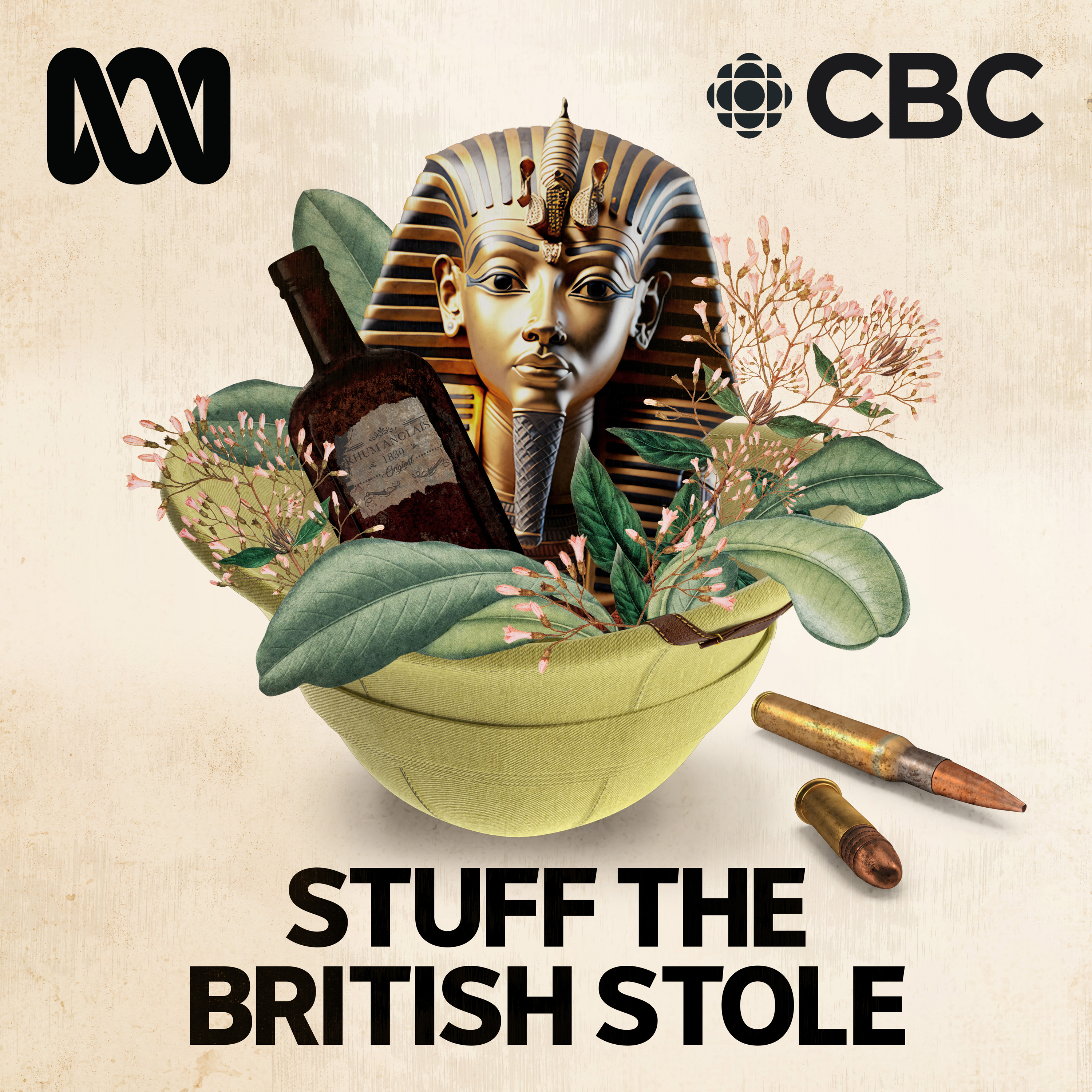
Piano, finally
Piano Finally is a podcast by an old bloke who is learning the piano, finally. I cover the process of learning the piano and music theory as an adult learner. I also review piano books, hardware and other materials from an adult learner's perspective.
Piano, finally
Episode 20 - Scaling the Heights
How does an older adult tackle the challenge of learning piano, and what can concert experiences teach us about music appreciation? Join me, David Reidy, as I navigate my journey through the keys, sharing not only my triumphs and stumbles with major scales and key signatures but also the magic of a recent symphony concert by the Sydney Symphony Orchestra. From the comfort of your home, enjoy a front-row seat to the melodies of Mozart, Respighi, and Shostakovich and uncover why attending concerts in Penrith is a delightful experience, both logistically and musically rewarding. I also recommend Guy Michelmore's YouTube channel this week, a treasure trove of wisdom for aspiring composers eager to explore the intricacies of digital audio workstations.
You can contact me:
- via email at david@pianofinally.show; this is probably the best option
- the show website, www.pianofinally.show
- Instagram and Threads @pianofinally
- and on YouTube
- all the podcast directories - list
- here's the RSS feed
Some of the links to books and other items mentioned in the podcast may affiliate links for Amazon or other providers. If you use one of these links, a commission may be paid to me at no additional cost to you. Thank you if you use a link.
All reviews of products, websites and services are unpaid, and no sponsorship has been received for any content on this podcast.
G'day everyone. I'm David Redy. Welcome to Piano. Finally, a podcast by an old bloke who's getting around to learning the piano. Finally, welcome to show 20. Thank you for taking the time to listen to the show. If this is the first time you've heard the podcast, I hope you find something interesting. If you're also learning the piano, let me know. You can contact me at david at pianofinelyshow. If you're a returning listener, I'm very grateful you've come back for more.
David Reidy:I did something on Friday that I haven't done in many years. I went to a symphony concert. The Sydney Symphony Orchestra was performing at the Joan in Penrith. This has several advantages, the first being that it's an hour closer to home than the Opera House where they normally play, and there's plenty of free parking and the tickets are considerably cheaper. The tickets to this performance were $65. Similar tickets at the Opera House are $115 each, and that's when they're bought in a subscription package. How do I know? Based on what I said in the last episode about supporting live music, I purchased a subscription to the SSO's Sunday Afternoon Concert Series next year, so that'll be five. Podcast episodes will be recorded early.
David Reidy:How was the symphony? It was great. There were three pieces without an intermission and all went very early. How was the symphony? It was great. There were three pieces without an intermission and all went very nicely. It was all the strings, though there was no brass, there was no woodwind, there was a timpani player, but other than that it was all voice and string Pieces by Mozart, respighi and Shostakovich Really enjoyable. I'm very much looking forward to going more regularly next year.
David Reidy:This week's YouTube recommendation is the composer Guy Micklemore's channel. Mr Micklemore has composed music for film and television, although I haven't seen any of the programs. He also runs ThinkSpace Education, which has courses for composers. Guy also used to work as a television newsreader, so he's an excellent presenter with a clear and precise manner that makes him easy to understand and follow. Guy's YouTube channel is a mix of different types of content, but they're all about making music as a composer. Guy uses a wide range of tools in his work and many of the videos on the channel are about this software. This includes tips on how to get the best out of the tools and reviews of new software features and updates. It's nice to see the software being reviewed by someone who uses it to a fairly full extent and for professional reasons, rather than just tinkering around. I haven't tried any of these tools yet, but if I ever get around to it I'll come back to watch that part of Guy's content.
David Reidy:More interesting to me at the moment is Guy talking about and demonstrating composition. He has videos covering getting started, developing ideas, including techniques to fix problems and getting it all sounding wonderful even when you don't have access to a full symphony orchestra. Here's a hint he shows how to use digital audio workstation software with a full score. All his videos are accompanied by musical demonstrations of the points being made. It makes for really interesting and thoughtful content. Demonstrations of the points being made. It makes for really interesting and thoughtful content.
David Reidy:The most recent video of Guy's that I have watched involved him composing a short piece from scratch based on the mood attached to a container of body wash. Apparently, body wash and shower gel is sold in the United Kingdom by what sort of mood it leaves you in, rather than by its ingredients or cleaning properties. That hasn't happened down here yet, although I did find one that claims to be anti-stress. Anyway, the one Guy buys is Ray Dock's Feel Revived Back in the studio. He uses the idea to make a simple melody and then adds more instruments and complexity until he has a complete piece. The whole video is about 25 minutes long and it's really interesting watching the ideas develop, including wrong turns and corrections. If you're interested in seeing a bit more about how music goes from an idea to a playable piece and a complete recording, then Guy Micklemore's channel is a good place to visit.
David Reidy:Scaling the Heights. Scales are boring. There's a reason that if you pay to go to a concert, you're going to hear something like Rachmaninoff's Fourth Piano Concerto, not the B-flat major scale over two octaves with both hands together. Scales are also really important. So as boring and repetitive as they are, I can see the point of learning them. After all, most pieces of music are written in a key and using the notes from that key's scale. So if you know the notes in the scale, you're on your way to knowing the notes in the piece.
David Reidy:Nothing in music is linear. Guitar strings don't go a, b, c, d, e, f. They go e, a, d, g, b, e, although music staff lines are in order. This non-linearity means that you need to come up with ways of quickly remembering things. Of course, over time the need for a memory crutch disappears. If you use a system enough, it becomes automatic. For example, stars are important in astronomy and their classes are obafg kmrns. It is many years since I've had to use the famous, somewhat anachronistic mnemonic OB. A fine girl kiss me right now, sweetie.
David Reidy:There are two situations in which you need to remember the features of each of the 12 keys and their variations when you're doing music theory and when you're playing a piece of music. At the moment, I'm concentrating on playing them, so I've been working on ways to help myself at the piano. This is what I've come up with so far. Since I've added the flat keys in, I have slightly modified the scheme I mentioned in the last episode. What is it I'm trying to remember when playing scales on the piano?
David Reidy:Two main things which black keys to use and which finger on each hand to start with. For example, if I were to need to play a D major scale, I'd want to immediately know that I start with fingers 5 and 1 for my left and right hands and that I need to play the first black key in each group of 2 and 3. The alphabet starts with A, and, because I've been using it for almost 60 years, I'm fairly comfortable with how it's ordered, much more so than the circle of fifths order. So my memory scheme runs from A to G. I've also split the 12 keys into sharps and flats, with C appearing in both and F missing from the sharps. For sharps, the number of black keys is 35024, missing 1. I can remember that order without a problem. It's shorter than a phone number, and I grew up when you still had to remember people's phone numbers with your brain than a phone number, and I grew up when you still had to remember people's phone numbers with your brain. You couldn't store them off-site in a portable computer.
David Reidy:Remembering which black keys to use is also simple. If we consider the black keys as a group of two the C sharp and the D sharp and a group of three the F sharp, g sharp and A sharp they fill by alternating the three group and the two group from left to right. Starting fingers are all 5 on the left hand and 1 on the right hand, except for B, which is 4 on the left hand. Flats are no harder than the sharps. There's just one more to consider. From A flat to G flat, the number of black keys is 4, 2, 0, 5, 3, 1, 6. This time the black keys come into play from right to left, again, alternating between the 3 group and the 2 group Fingers are all 3 on the left hand and 2 on the right for the keys with the flat in the name, except for G flat, which starts with a 4 on the left. So the only thing that is tricky to remember is the sequence of numbers. But there's even an easy way to do that. Start at C. If you start with C, the sharps go 0, 2, 4, flat 1, 3, 5. And for the flats they go 0, 0135. And for the flats they go 0 531 642.
David Reidy:I know that an audio-only podcast is not the most effective way of explaining all this, so I'm making a video. In the long run I intend to make a series of videos working through the music theory that's useful for an older piano learner to know. That will take a while to make and I'm not giving myself a deadline for it, but what I do need to do is to test out the setup I'm thinking of using. When I've made videos in the past it has involved quite complex equipment, but technology has made that much simpler. Apple's recent release of Final Cut with its multiple camera features has made multi-camera recording much simpler. I have two suitable iPhones and an iPad, so I'm going to give that a try. The Scales video should be available on the Piano. Finally, youtube channel soon after this podcast episode comes out. Search for Piano, finally, on YouTube. If you'd like to check it out, let me know what you think once it's up there. It out. Let me know what you think once it's up there. This week's review isn't so much about what I've been using. It's more about what I'm no longer using.
David Reidy:When I had my first podcast, most social media was pretty new. Twitter was just getting started, facebook was still limited to a few universities and most special interest groups had their own dedicated places, such as Ravelry for the knitting community. Most importantly, no one had worked out how to make really big money from any of them. My interactions with social media at the time were overwhelmingly positive, probably because I mainly hang out with people who shared my interests at that time knitting and the computer MMORPG EverQuest 2. The online knitting community was just as nice as the in-person knitting community, universally supportive of each other and a really friendly place to be. Unfortunately, most social media sites can't be defined as friendly places anymore.
David Reidy:Twitter has become even worse since it turned into X, with the removal of any form of moderation and the active promotion of harmful ideologies, misinformation and downright lies. In the past, it was possible to use a third-party client, which could effectively hide most of the rubbish on the platform, but one of the first things done after the takeover was to ban all third-party clients, so now you are subjected to its effluent, whether you like it or not. I haven't used Twitter since the takeover, and that's not likely to change With Twitter's demise. Several other social media platforms have tried to take its place. Meta launched Threads on the back of its Instagram platform. I've been trying it, but it has a similar problem to X in that you can't use third-party clients that remove the posts that are simply time-wasting clickbait. I've found that for any post that is of the slightest interest, there will be 10 or so other posts that are just attempting to catch clicks, so I've dropped threads as well. I'm looking forward to when we have an AI tool that can do a decent job of filtering content. I might have another look then.
David Reidy:So what's left? Not much. I have a Facebook account for organising family get-togethers and for posting the weekly podcast episodes. It cross-links to an Instagram account and I rarely use them for anything other than that. Therefore, if you want to contact me, send me an email at david at pianofinally dot show. That's the best way.
David Reidy:What have I replaced social media with? I phone people and talk to them Old-fashioned, isn't it? Well, that's it for this week. If you'd like to contact me, email is the best way. You'll find me at david at pianofinallyshow and the website at wwwpianofinallyshow. In both cases, pianofinally is all one word. Let me know where you are in your piano journey or if you'd like to test my practice software when it's ready. The show is also on Facebook and Instagram. You can subscribe via any of the popular iOS or Android podcast applications or from directories such as Apple Podcasts, spotify or Player FM.
David Reidy:So until the next episode, I hope your piano stays in tune and you enjoy your time at the keys. It has been a second week of scales. I've been working on the six key signatures with flats, mostly with the sharp keys, occasionally getting a look in. Next week I plan on getting back to some pieces that I want to learn and playing scales in staccato as well as legato. This week's progress recording is some of the major scales with flats. The recording was made using the NV-10 as the keyboard and Pianoteq 8 running on the Mac Mini Pianot eq is set up with the New York Steinway Model D in wide player mode.
Podcasts we love
Check out these other fine podcasts recommended by us, not an algorithm.

Connected
Relay
Upgrade
Relay
No Such Thing As A Fish
No Such Thing As A Fish
We Can Be Weirdos
Global
Stuff The British Stole
ABC and CBC
The iDeveloper Podcast
Steve Scott (Scotty) & John FoxRaven On: A Pop Culture Podcast
Natalie Bochenski & Stuart Layt
Smart Enough to Know Better
Dan Beeston & Greg Wah
TopMusic Piano Podcast
Tim Topham
The Chopin Podcast
Garrick Ohlsson and Ben Laude



